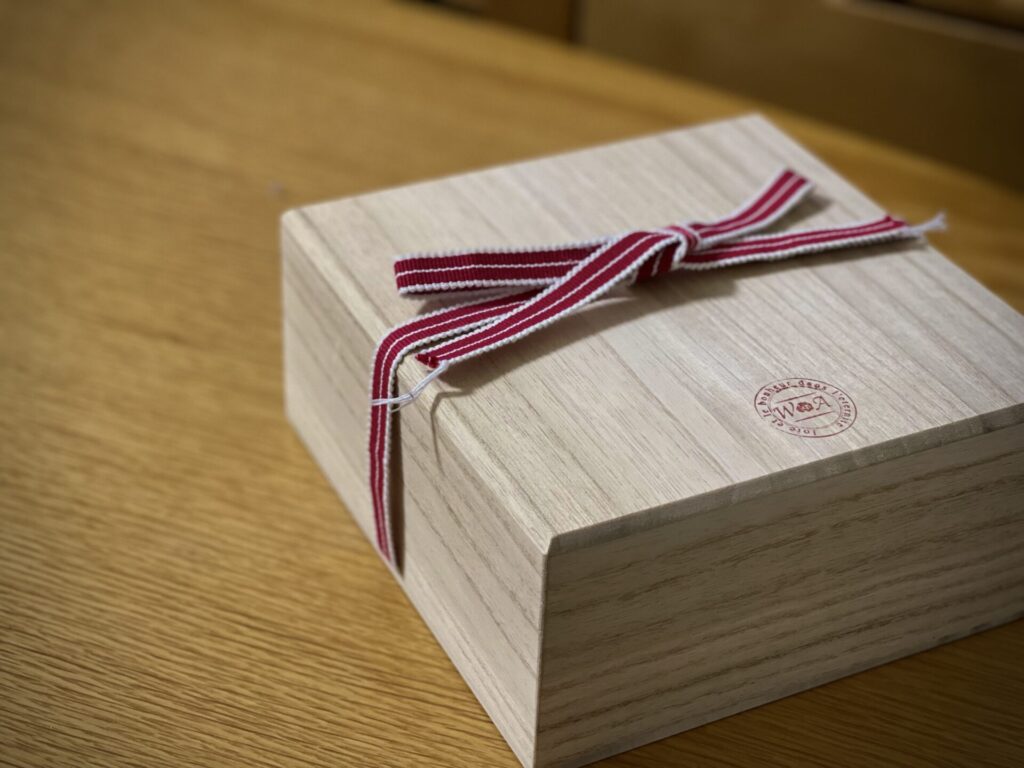Excellent characteristics of paulownia wood that have made paulownia boxes "Kiribako" so valuable in Japan

Fast growing
Paulownia trees take about 15 to 20 years to grow to the point where they can be used as a material after being planted. Generally speaking, it takes about 80 years for a cedar tree to grow and about 40 years for a pine tree. Paulownia wood can be used as lumber in a quarter to half of that time. In addition, paulownia trees can be cut down two or three times and still grow again. Since it can be converted into a resource quickly, using paulownia as a material eliminates the need to cut down trees that take a long time to recover. In other words, by buying paulownia boxes "Kiribako", you are also helping to protect greenery.
Strength for impact

Its pipe-like cells flexibly deform and act like a cushion, making it two to three times more shock absorbent than marble. When placed in a paulownia box "Krirbako", it protects the items inside from external damage.
Shuts out mold
During periods of high humidity, the paulownia box expands due to its humidity regulating properties. This further eliminates gaps and keeps moisture inside. This keeps the inside of the paulownia box dry and protects the contents from mold.
Fire resistance
The ignition point of paulownia wood is 425°C, which is higher than that of other dry woods (the ignition point of cedar is 238°C), and it is said that in the case of thick paulownia boxes "Kiribako", the surface is carbonized without igniting. Because there is a large air layer inside, when it burns, the surface carbonizes easily and it takes time for it to burn to the inside. Paulownia wood is often used inside safes because it protects important items from heat in the event of a fire.
Keeps insects away
Paulownia wood contains a large amount of ingredients (paulonin, sesamin, etc.) in its extracted components that keep insects at bay. As a result, dried paulownia wood is said to be less likely to attract insects. Other trees must be cut down in August and September or they will die due to wood-eating insects, but paulownia wood can be cut down at any time of the year because it does not attract insects. Paulownia is truly a sustainable timber.
Rot-resistant
It is light, soft, and extremely resistant to decay. It is because paulownia wood contains high levels of tannin, a preservative, which enables paulownia boxes "Kiribako" to be used for a long time. We often see "Kiribako" that are more than 100 years old.
Excellent acoustics
Paulownia wood is porous, with thin walls and lots of space between the wood fibers and other cells. For this reason, paulownia wood has excellent acoustics and has been used for musical instruments such as the koto (Japanese harp) and biwa (Japanese lute) since ancient times.
Ease of processing
Since the shrinkage rate of wood is very small, it can be made precisely with little deviation or cracking. This means that slight shrinkage or expansion can be protected from moisture and water outside the space.
Second lightest in the world
It ranks second in the world after balsa (0.1-0.2). Paulownia wood has a specific gravity of 0.29 to the specific gravity of water (1), making it the lightest of all Japanese woods. Its specific gravity (specific gravity at zero moisture content) ranges from 0.17 to 0.37, and its specific gravity (specific gravity at 15% moisture content) ranges from 0.19 to 0.40. The thin membrane walls of the cells and the large air layer inside make it soft and easy to carry and handle. One of my acquaintance's one-year-old child was carrying around a stack of 10 sample plates of 30 cm square.
Lightweight but strong

It has an anti-bending strength of about 70%. It is beautiful, lightweight, and resistant to abrasion. It is understandable that this material was favored for use in geta (wooden clogs).
Please refer to how to order and contact us via our cotact form.
